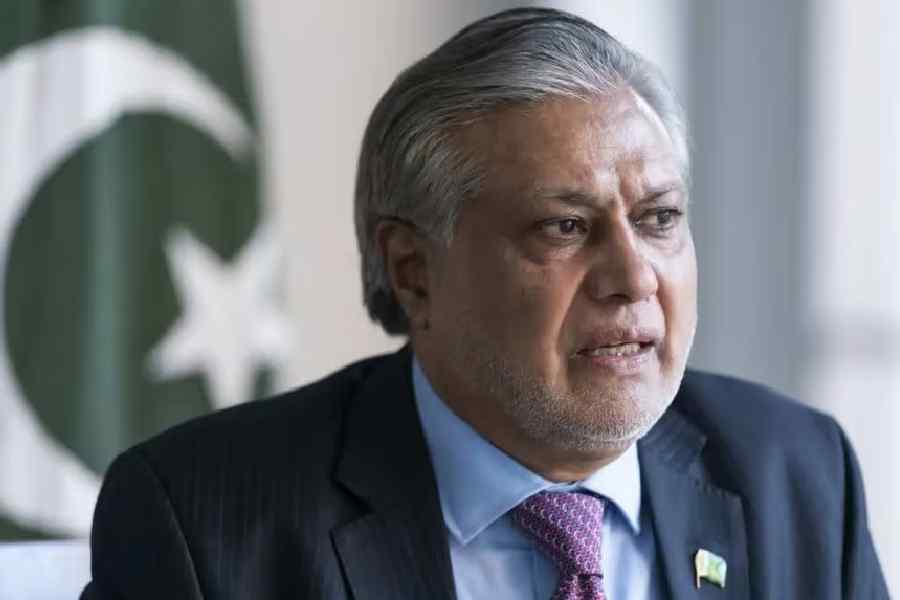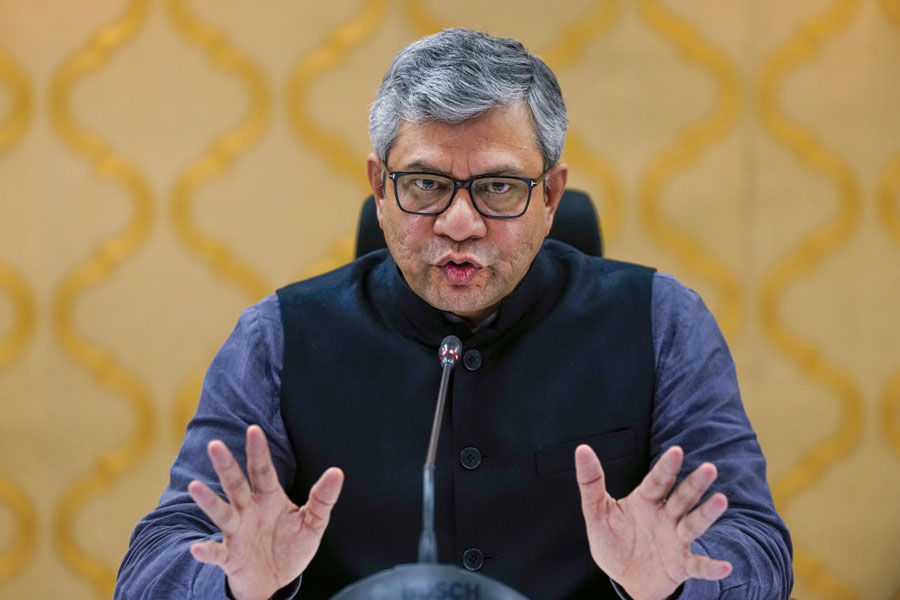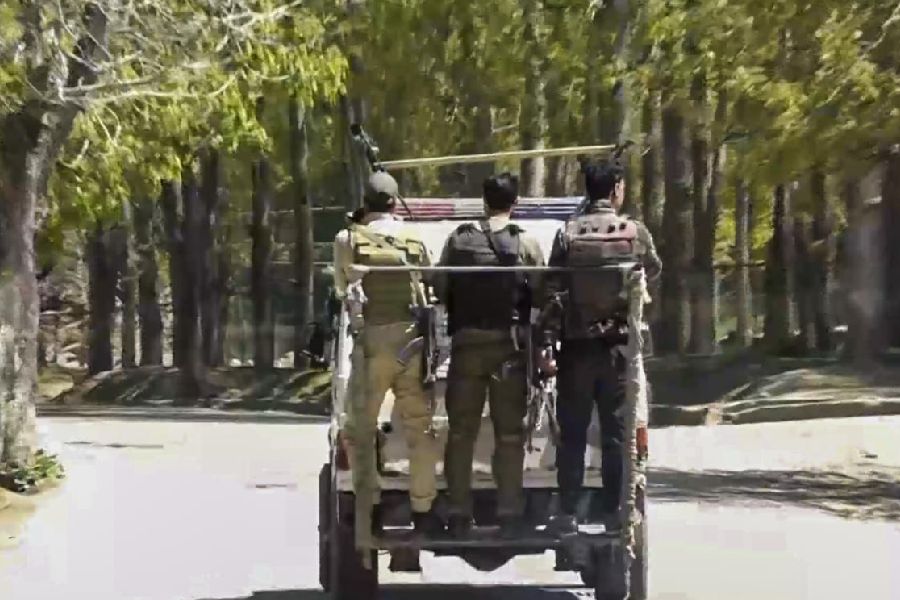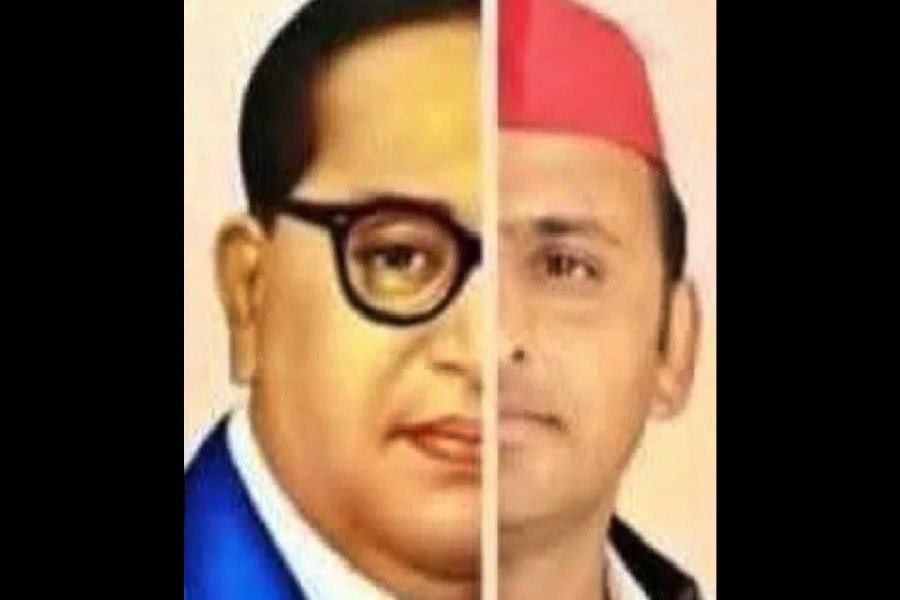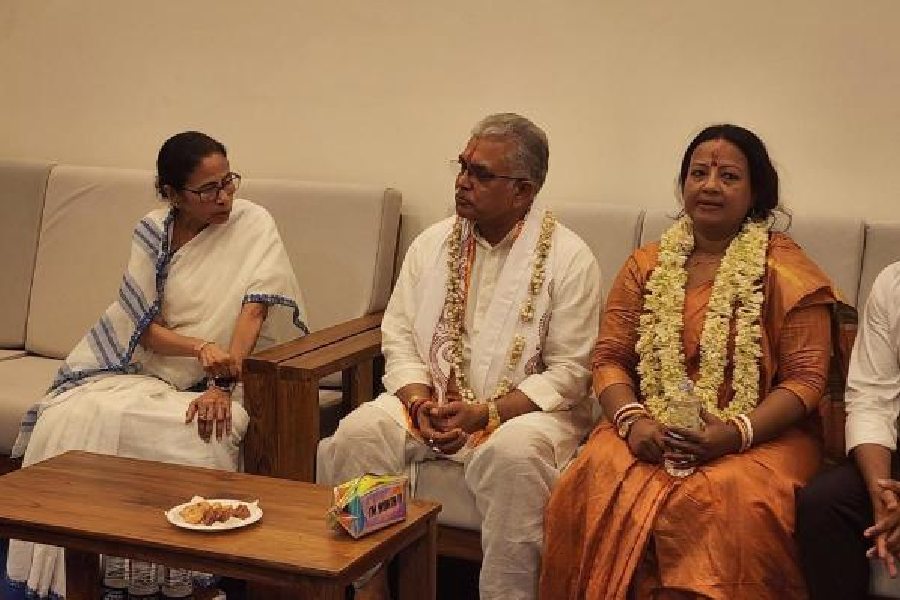 |
| An undated photo shows pilgrims as they meditate at the wall below the nativity scene within the Maya Devi Temple at Lumbini, Nepal. The remains of the earliest temples at the site are in the background. (AFP/ Ira Block/ National Geographic) |
Patna, Nov. 26: Legend has it that Queen Maya Devi, the Buddha’s mother, gave birth to him while holding on to a sal tree in a garden at Lumbini.
Now archaeological excavations at Gautama Buddha’s birthplace in modern-day Nepal are corroborating literary sources and traditions in establishing that he was born in the 6th century BC following the discovery of a structure that is being claimed as the oldest Buddhist shrine yet unearthed.
The timber shrine and brick structures above it lay beneath a temple that had long been identified as the birthplace of the Buddha.
Dating fragments of charcoal and grains of sand, researchers have determined that the lower structures were erected as early as the 6th century BC.
A team of international archaeologists, led by Robin A.E. Coningham of Durham University in England, reported the findings on Monday in an article published online in the December issue of the journal Antiquity. This was, the team said, “the first archaeological evidence regarding the date of the life of Buddha”.
They also described the new line of research as having “the potential to provide yet more evidence for the earliest expressions of Buddhist architecture and ritual practice”.
The exact year of the Buddha’s birth is disputed. Nepalese authorities favour 623 BC, while other traditions speak of more recent dates that go back from 400 BC to 545 BC, usually accepted by Indian historians.
A white temple on a gently sloping plateau in Lumbini, around 32km from the border with India in Bihar’s West Champaran district, draws hundreds of thousands of pilgrims every year to read a sandstone pillar documenting Emperor Asoka’s homage at the birthplace of the man who became the “enlightened one”.
The white temple was built in 1998 around the ruins of the shrine complex built by Asoka, the 3rd century BC Mauryan emperor.
The complex, the earliest known in Lumbini, was thus far believed to be the scattering of stupas and inscriptions left by Asoka, who promoted the spread of Buddhism across South and East Asia.
The report by archaeologist Coningham says “Lumbini is a microcosm for the development of Buddhism from a localised cult to a global religion”. The shrine, for example, was transformed from a localised timber temple into “a monumental Asokan-period temple and pillar complex inscribing it as a site of imperial pilgrimage”, it says.
The archaeologists said the layout of the later brick shrine, which dates back to the Asokan times, duplicates that of the earlier timber shrine that has now been unearthed, in what could be interpreted as evidence of continuity of Buddhist worship at the site.
The timber shrine even had an open space at the centre that suggested a link to the Buddha’s nativity tradition. Deep tree roots in the centre space may even have been from the tree his mother presumably held on to.
Although much is known of the Buddha’s teachings and half a billion people are Buddhists, there is little to document his life, Coningham said, except through textual sources and oral tradition. “We thought, why not go back to archaeology to try to answer some of the questions about his birth?” he said.
Indian historians are unanimous in asserting that literary and inscriptional sources are “better tools” to establish the time or period of the birth of a personality as “ancient as the Buddha”. The archaeological findings could be used only to corroborate the literary traditions that include Asokan pillars, Pali literature, accounts of Chinese travellers Fa Hien and Hiuen Tsang and the literature of other South Asian countries where Buddhism spread during the days of Asoka and onwards.
“Buddha was born in the sixth century BC. His date of birth has been accounted as 545 BC on the basis of literary sources,” said Vijay Kumar Choudhary, director, K.P. Jaiswal Research Institute, Patna.
Choudhary pointed out that the evidence unearthed in excavations at Lumbini might have suggested the existence of a human settlement much prior to the birth of Buddha. “But the archaeological excavations can throw light only on the antiquity of a civilisation. There is no way the archaeological evidence can help decipher the date of birth of a personality.”
Choudhary also said Buddhist scholars had studied inscriptions and other related scriptures to reach the conclusion that the Buddha was born in 545 BC and attained his parinirvana (death) roughly in 486 BC.
Historian and former head of the department of history, Delhi University, D.N. Jha said: “The evidence gathered still requires many layers of studies to suggest anything conclusive.”
The site at Lumbini was lost in time, but rediscovered in 1896 when the Asokan pillar, erected in 249 BC, was found by the German Catholic priest-turned-archaeologist Anton Fuhrer. The Pali inscription written in the Brahmi script suggested that the remains of a temple, christened Maya Devi temple, were indeed where the Buddha was born. The place is now a Unesco World Heritage site and a new structure has been built around the ancient ruins.
“These discoveries are very important to better understand the birthplace of the Buddha,” Ram Kumar Shrestha, Nepal’s minister of culture, tourism and civil aviation, said in a statement released by the archaeology team. “The government of Nepal will spare no effort to preserve this significant site.”


